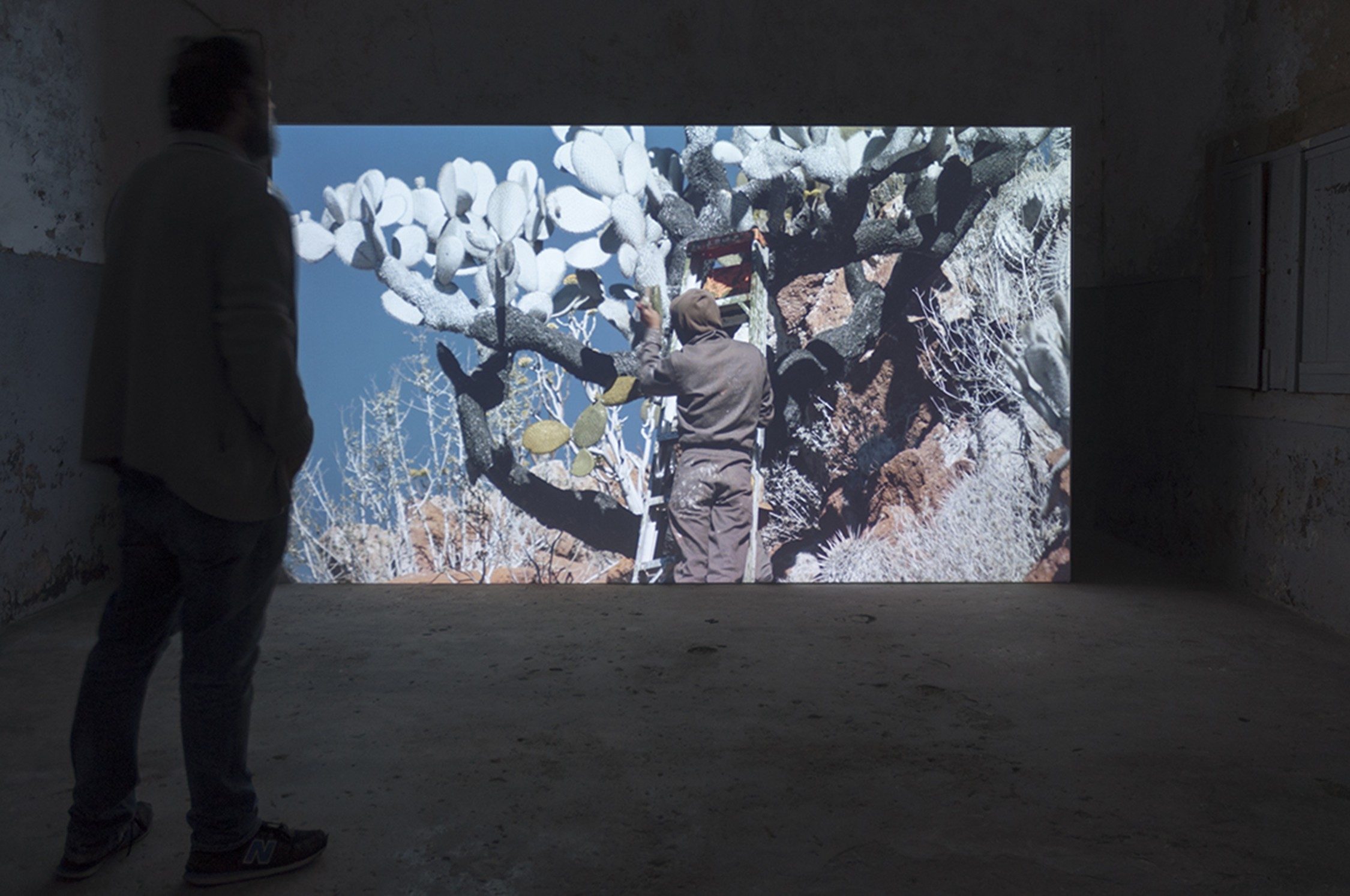
Julius von Bismarck
The Third Bank
Nov 2 – Dec 29, 2019
Anozero ’19 – Bienal de Coimbra, Portugal
A Terceira Margem
The Third Bank
“[…] at first, with the coming of the first floods on the river and the unrelenting rains, we all feared the world was ending […]”
João Guimarães Rosa,
The Third Bank of the River, 1962
The history of the city of Coimbra and its heritage bears the mark of its coexistence with the waters of the Mondego River, which over the centuries has stubbornly burst its banks. The natural rhythm of its surges forced the city to continuously adapt to being variously down the river, lost in the river, inside the river, constantly replacing and updating what apparently cannot be changed. How can a place systematically invaded by such force be settled?
On the left bank of the Mondego is the convent dedicated to Santa Clara, founder of the female branch of the Franciscans. It was financed by Isabel de Aragão, Queen of Portugal at the beginning of the fourteenth century and suffered constant upheavals on its ground floor, to the point where an upper floor had to be built. But the insistence of the waters of the long shores forced the Poor Clares who were enclosed there to leave the old convent and find refuge in Monte da Esperança, where the Santa Clara-a-Nova Convent is situated today, and has been since the 17th century.
This encounter with the perpetual renewal of the river happens in reverse in the story The Third Bank of the River, by João Guimarães Rosa (1962). The lone decision of the protagonist is not to avoid nature, but to face it alone and move about on the river in a canoe made especially for him, just large enough for one person. This stance of open self-reclusion, a radical gesture of irreversible occupation that defines the territory of the third bank, stirs up his family members, who watch, react to or narrate the strange truth according to their expectations and roles.
Five phrases from the story serve as the conceptual axis for the possible unfolding of this biennial. They suggest, among other possibilities, silence – Father said nothing; passage – beyond the possibility of seeing or being seen; marginality — travellers along the river and people living near the bank; invention – put his invention to use; and finally militancy — muster courage. These five topic-phrases will be interpreted by means of a plurality of voices: in the tripartite curatorship, they guide the exhibition; as interpreted by the authors, they give structure to the catalogue; and they serve as a starting point for activating the programme being carried out by the master’s students in curatorship at the Colégio das Arts of the University of Coimbra.
In addition to the Santa Clara-a-Nova Convent, the exhibition The Third Bank extends through the city centre streets (occupying the Chiado Building and the Sala da Cidade), the University of Coimbra (Laboratório Chímico, The Museu Zoológico and Colégio das Artes), and the premises of the Círculo de Artes Plásticas de Coimbra (Sede and Sereia, the latter with parallel curatorship by Tomás Cunha Ferreira). Among the approximately 40 participating artists will be João Maria Gusmão and Pedro Paiva, Erika Verzutti, Belén Uriel, Luís Lázaro Matos, José Spaniol, Bruno Zhu, Ana Vaz, Meriç Algün, João Gabriel and Anna Boghiguian.
Anozero – Coimbra Biennial of Contemporary Art was born from a joint effort between the Círculo de Artes Plásticas de Coimbra, the University of Coimbra and Coimbra City Council and, in its third edition, is curated by Agnaldo Farias with Lígia Afonso and Nuno de Brito Rocha.